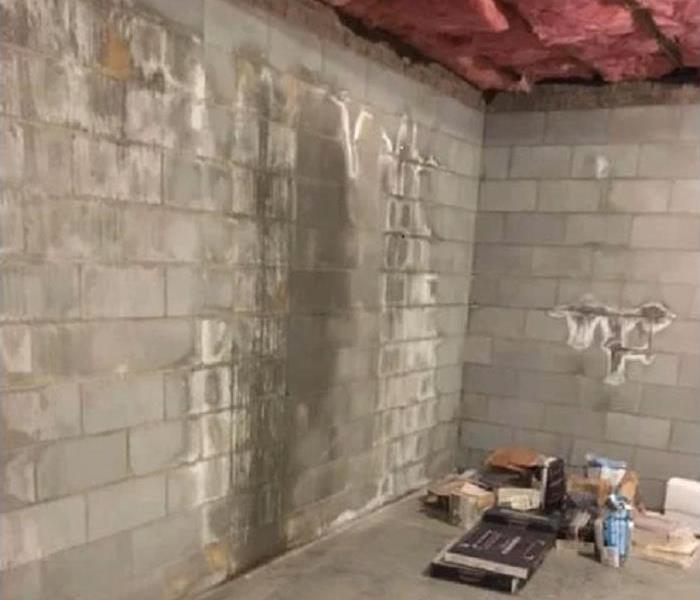What Is That "White Stuff" Growing On My Basement Walls?
10/18/2022 (Permalink)
Have you ever seen that white/gray "fuzzy stuff" growing on your basement walls or in someone else's house? Were you worried that it was hazardous? Well, the "fuzzy stuff" is called efflorescense and it is NOT dangerous. It is more annoying and unattractive, but nothing to worry about or nothing that can't be fixed.
If you have a concrete or masonry block foundation, this is a common problem. Efflorescence can be easily removed because it simply is salt. If you observe efflorescence on in your home, this means that you have a water issue that must be taken care of. This moisture problem can cause deterioration if ignored.
The cause of this is water from the outside is penetrating the brick or concrete and comes in contact with minerals. A chemical reaction then takes place and dissolves the minerals. The moisture then migrates to the other side of the block or concrete (the inside of your home) and eventually evaporates. As water evaporates from the surface the mineral deposits are left behind, and these efflorescence crystals can grow.
The concern is that the efflorescence is NOT just on the side of the brick or concrete, but these same crystals can also grow inside the brick or concrete and cause spalling. The definition of spalling the breaking of ore, rock, stone or concrete into smaller pieces or fragments. This spalling can make the surface peel, pop or flake off. The salt pushes from the inside out and can eventually cause crumbling and deterioration.
Hopefully if you remove the efflorescence it does not come back. If it does not return, this probably means that the cause was the initial moisture and salts from when the concrete was placed. However, if the efflorescence does return, this is a clear indication that water is entering the brick or concrete wall and pushing the salts out.
Can I Prevent Efflorescence?
The answer is YES! The best way to prevent the efflorescence is to prevent water from infiltrating the wall. If you see efflorescence crystals it usually means there is a leak somewhere letting outside water in. Once, the source of the water infiltration has been located and stopped then the walls can be cleaned with an efflorescence remover.
While inside systems can divert the water, it may not solve the problem of efflorescence and other moisture-related mineral build-ups. Regardless of what is done on the inside, water is still entering through the wall from the outside.
The salt that ends up as efflorescence crystals on your walls, can come from salt laden soils or the Portland cement in the mortar and grout. The soluble salts could come from the sand or from contaminated water used to make the concrete, grout or mortar.
Another culprit is, of course, the clay brick itself. The natural clays used in the manufacture of brick often contain soluble alkali sulfates. Most modern fired clay brick have balanced chemical additives to immobilize the sulfates and render them insoluble. This prevents the salts from being dissolved into a solution that could migrate through the wall to the surface. Most fired clay brick do not greatly contribute towards the efflorescence problem.
If you have a problem if efflorescence and would like to have it removed, please call the water damage professionals at SERVPRO of SW Waukesha County (262-542-0900) or SERVPRO of Jefferson County/Oconomowoc (920-674-3002).

 24/7 Emergency Service
24/7 Emergency Service
